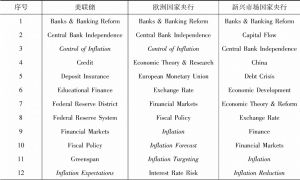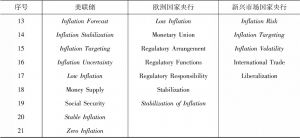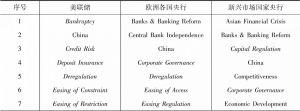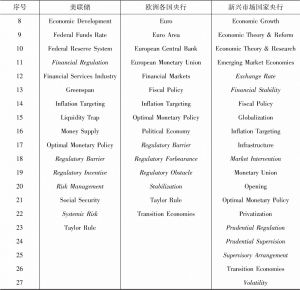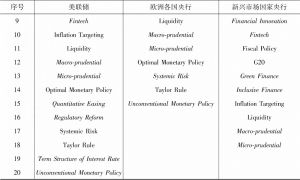章节
四十年来中央银行的研究进展及中国的实践
摘要
改革开放四十年来,中国金融体系从无到有,发生了翻天覆地的变化,目前已基本建成了与中国特色社会主义市场经济相适应、具有活力和国际竞争力的现代金融体系。这四十年,现代货币经济学和全球中央银行政策实践也发生了深刻变革。作为全球最大的新兴发展加转轨经济体的中央银行,中国人民银行面临的现实约束条件更加复杂,央行的研究为推动中国金融体系发展和央行科学决策提供了可靠支撑,既与世界同步,也具有自己的鲜明特征。本文以世界经济十年左右的周期波动及与之相伴随的货币经济学理论进展和中央银行政策变迁为主线,总结了四十年来中央银行的研究进展和中国经验,旨在进一步推动中央银行的理论研究,更好地促进金融高质量发展。
作者
陈雨露 ,中国人民银行副行长,教授。
检索正文关键字
章节目录
- 一 引言
-
二 四十年来全球中央银行的研究进展与中国的实践
- (一)20世纪70年代后期到80年代末:为了驯服“通胀野马”,货币数量论和货币主义政策实践达到巅峰
- 1.发达经济体货币政策纷纷从相机抉择转向按规则行事的货币数量目标制
- 2.这一时期,国内的研究主要聚焦于财政和信贷的配合、中央银行职能以及金融体系的重构
- (二)20世纪80年代末到90年代末:“大缓和”时代的头十年,“单一目标、单一工具”货币政策框架逐步确立
- 1.以独立性和通胀目标制为典型特征的“第二次中央银行革命”渐次展开
- 2.受“单一目标、单一工具”学术思潮的影响,货币政策与金融监管的分离逐渐成为主流趋势,这一时期基于委托代理、机制设计等大量文献也为分离趋势提供了理论证明
- 3.这一时期,新兴市场国家则面临开放经济条件下“三元悖论”的现实冲击
- 4.20世纪90年代,中国人民银行实现了货币政策调控框架的第一次重大转型,从直接调控转向现代意义上的间接调控,并引领推动了中国金融体系的改革发展开放,为间接调控提供了必要的微观基础和制度条件
- (三)20世纪90年代末到2008年:“大缓和”时代后十年,关于金融自由化的研究成为主流,也导致了全球范围内的监管放松
- 1.放松监管背景下的“监管竞次”使分业监管极不适应金融综合经营的趋势,从而埋下了金融危机隐患
- 2.这一时期,新兴经济体反而吸取了亚洲金融危机的教训,积极调整经济结构和政策体系,积累了足够的经验和政策空间应对危机冲击
- 3.中国人民银行研究人员并未拘泥于现有理论,而是将短期宏观调控与中长期金融改革紧密结合,高度重视“在线修复”金融体系,根据中国实际提出很多有利于推动金融改革的理论分析和政策主张
- (四)2008年之后:“大衰退”时期,对全球金融危机的持续反思
- 1.危机的爆发暴露出主流经济学理论和研究范式存在的缺陷,四大研究主题凸显
- 2.这十年中国人民银行的研究与本轮危机后全球央行的反思是一致的
- (一)20世纪70年代后期到80年代末:为了驯服“通胀野马”,货币数量论和货币主义政策实践达到巅峰
- 三 未来中央银行研究展望
相关文献
查看更多>>>



